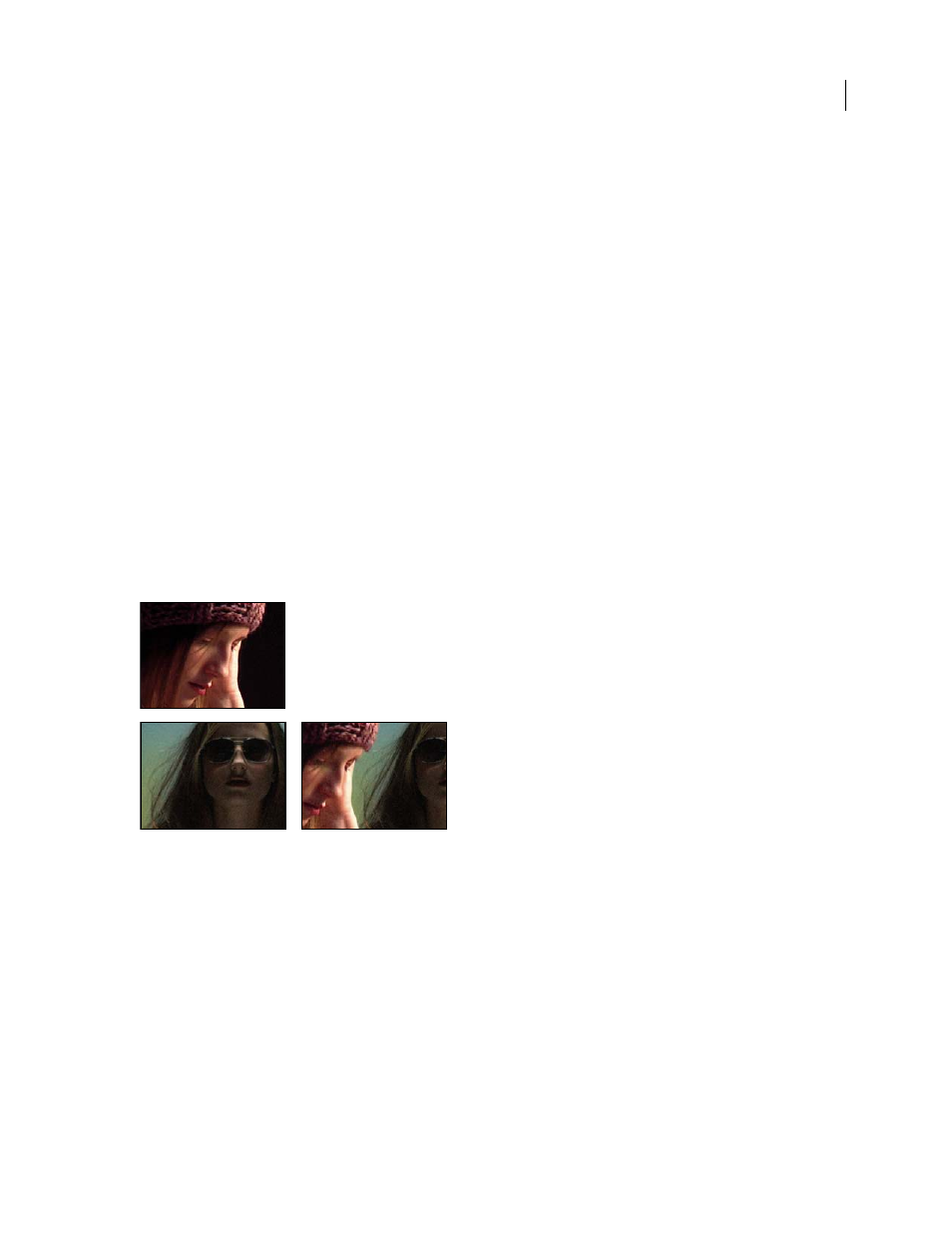Match grain effect – Adobe After Effects CS3 User Manual
Page 469

AFTER EFFECTS CS3
User Guide
464
8
Trim the layer’s Out point at this frame.
9
Prerender this layer, and import the pre-rendered movie into your project.
10
Select the imported footage item in the Project panel, and choose File > Interpret Footage. Then set Loop to the
number of loops required for the duration of the layer in the project.
Match Grain effect
The Match Grain effect matches the noise between two images. This is especially useful for compositing and in
bluescreen/greenscreen work. The Match Grain effect only adds noise and can’t remove it, so if the destination is
already noisier than the source, an exact match is not possible. In this case, you can first use the Remove Grain effect
to clean up the destination and then apply the Match Grain effect to the result to get a perfect match.
The Match Grain effect uses noise sampling as its starting point. Basically, entire frames of new noise are synthesized
to match the noise samples. You can modify the noise in many ways before the effect is applied to the new image,
such as duplicating the noise from an image but making the noise larger and redder before applying the noise to
another image.
The Match Grain effect shares some controls with the Add Grain effect. (See “Add Grain effect” on page 459.)
Note: The Match Grain effect samples the noise on the frame in the source layer that corresponds to the first frame in
the destination layer. If the source layer is not present at that frame, or if the noise samples contain transparent areas,
no noise is sampled or applied.
This effect works with 8-bpc and 16-bpc color.
Original images (left), and with effect applied (right)
See also
“Working with added or matched grain” on page 457
Match noise or grain between images
1
Make sure that the source and the destination layers are in the same composition.
2
Select the destination layer to which you want to add grain.
3
Choose Effect > Noise & Grain > Match Grain.
4
Choose a layer from the Noise Source Layer control in the Effect Controls panel to specify the source layer from
which you want to sample the grain. (The Noise Source Layer control lists only layers that are in the Timeline panel.)
